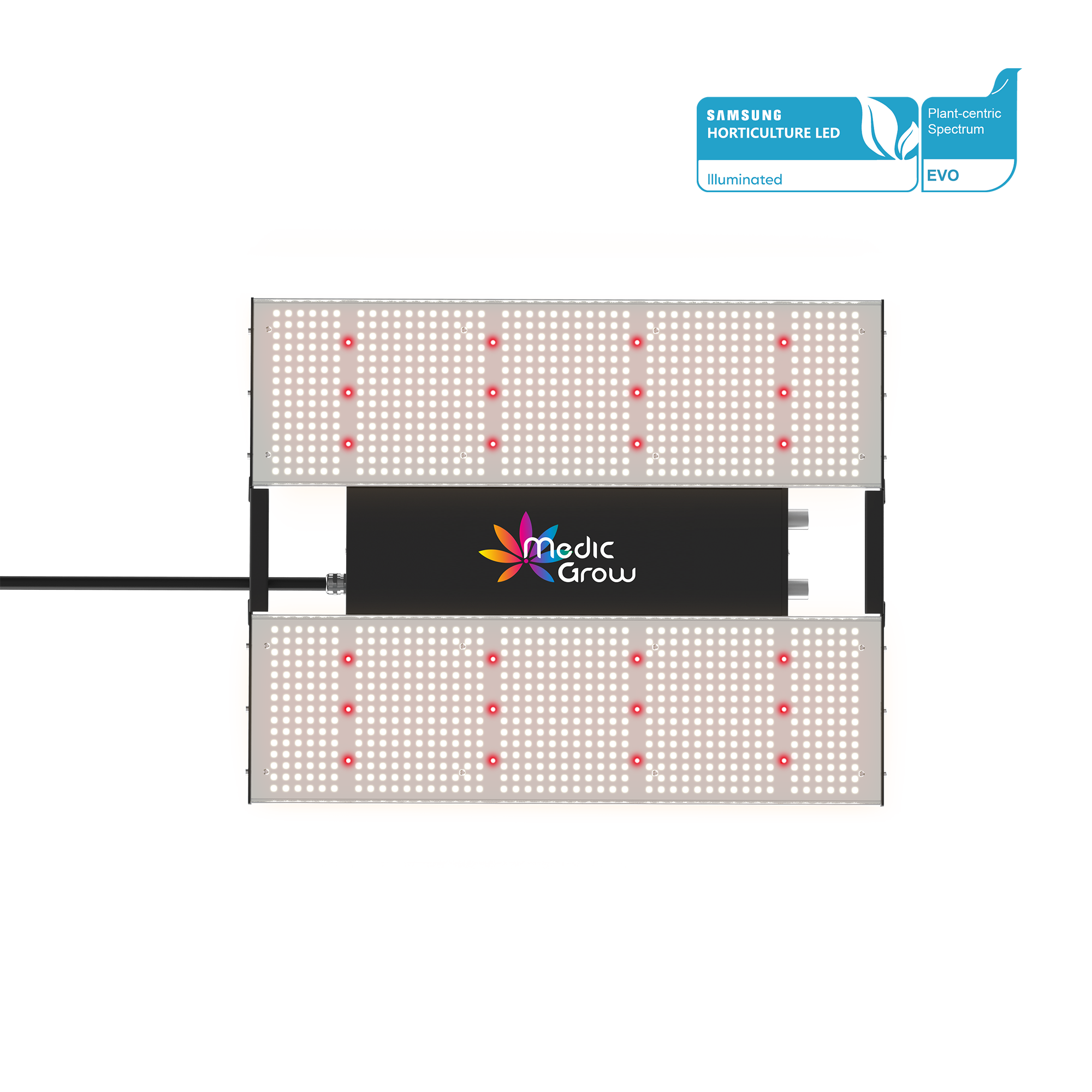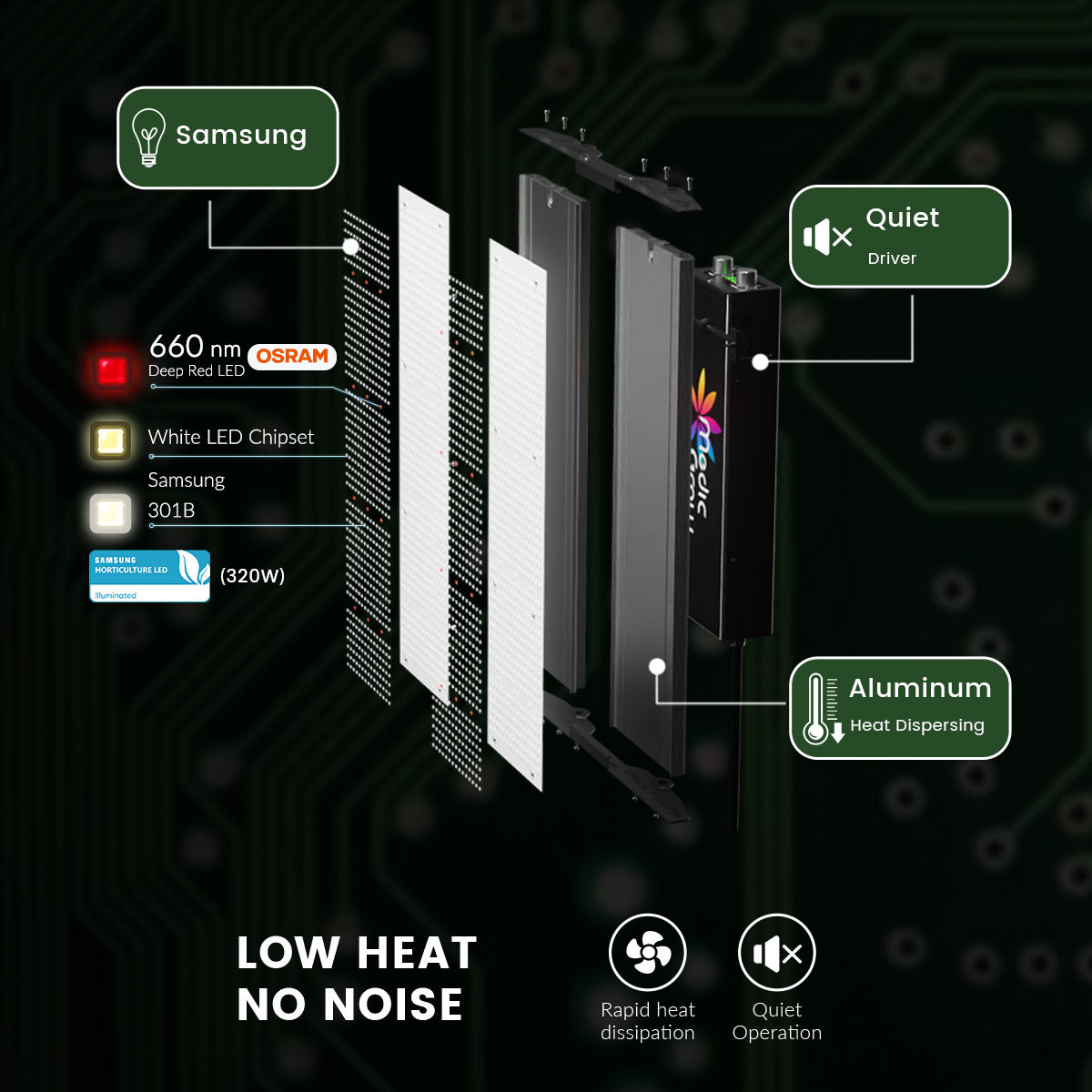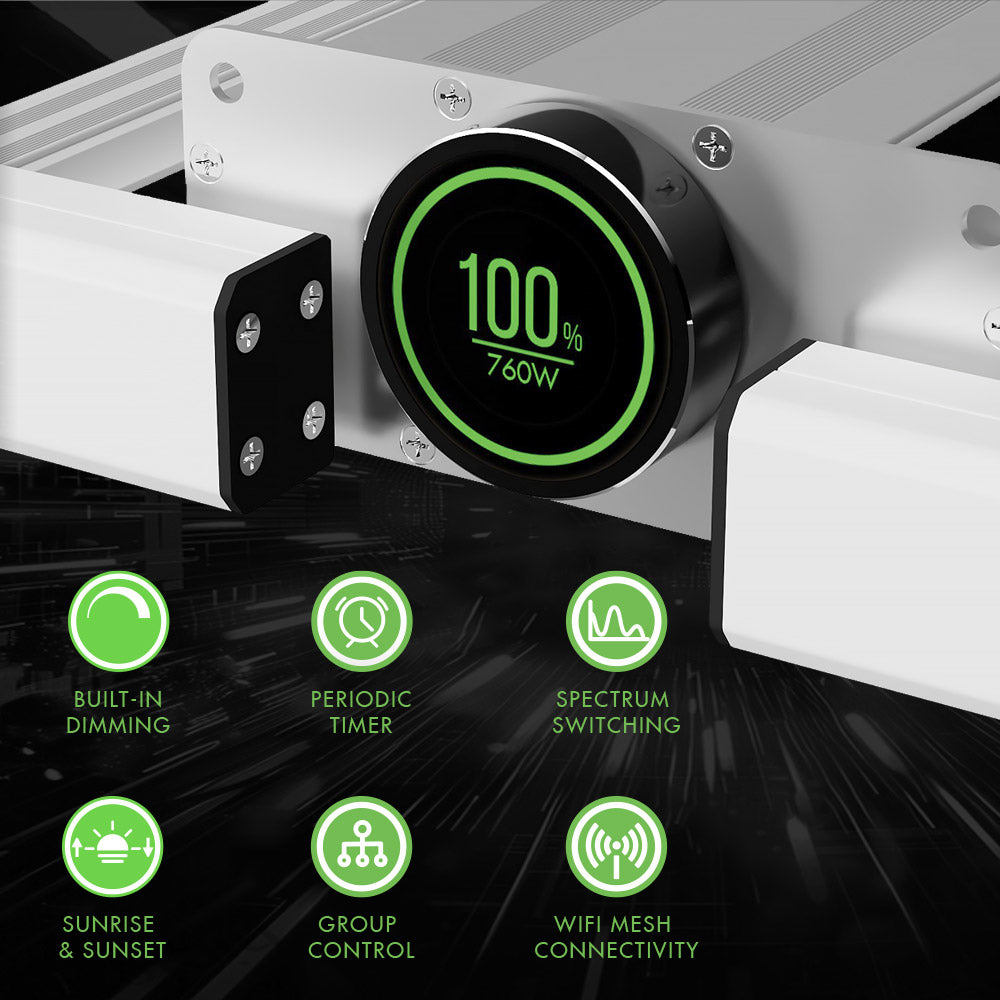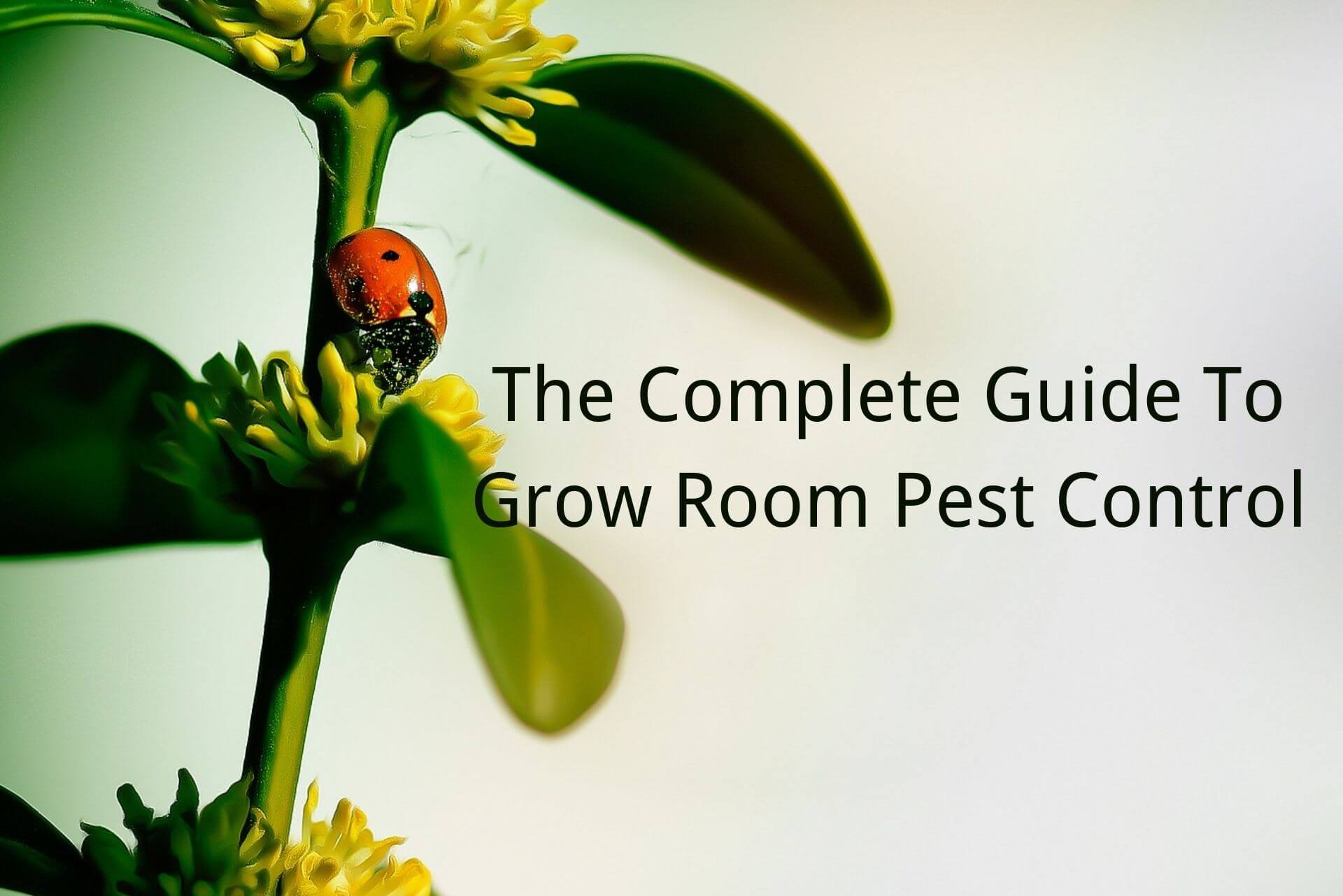
The Complete Guide To Grow Room Pest Control
Indoor growing can be quite tricky (with the help of LED grow lights) and complex–especially when you have to deal with grow room pest control.
Imagine this: you're a newbie grower and you've just brought in your first batch of plants and in only a few days, you see flying bugs in the grow tent.
Pests can be bothersome. Both beginners, as well as seasoned growers, end up having to deal with them.
Most amateur growers are unaware of what to expect or how they need to look after their plants to keep them lush green and healthy.
After you've had a couple of encounters with pests, you will be able to identify, prevent and fight them with ease.
In this article, we'll walk you through:
- Part 1: Importance Of Grow Room Pest Control
- Part 2: How Do Pests Enter A Grow Room?
- Part 3: Types Of Pests In Your Grow Room
- Part 4: How To Tackle Pests In Your Grow Room
- Part 5: Companion Planting For Grow Room Pest Control
- Part 6: Tips To Keep Your Grow Room Environment Ideal For Plants
Importance Of Grow Room Pest Control
Grow room pest control is important because it allows your plants to grow and thrive without being damaged or killed by pests.
Insects may also transmit grow room disease and affect the overall health of a plant which is why it becomes crucial for growers to keep them away. Pests can ruin the appearance and hamper the quality of fruits and vegetables.
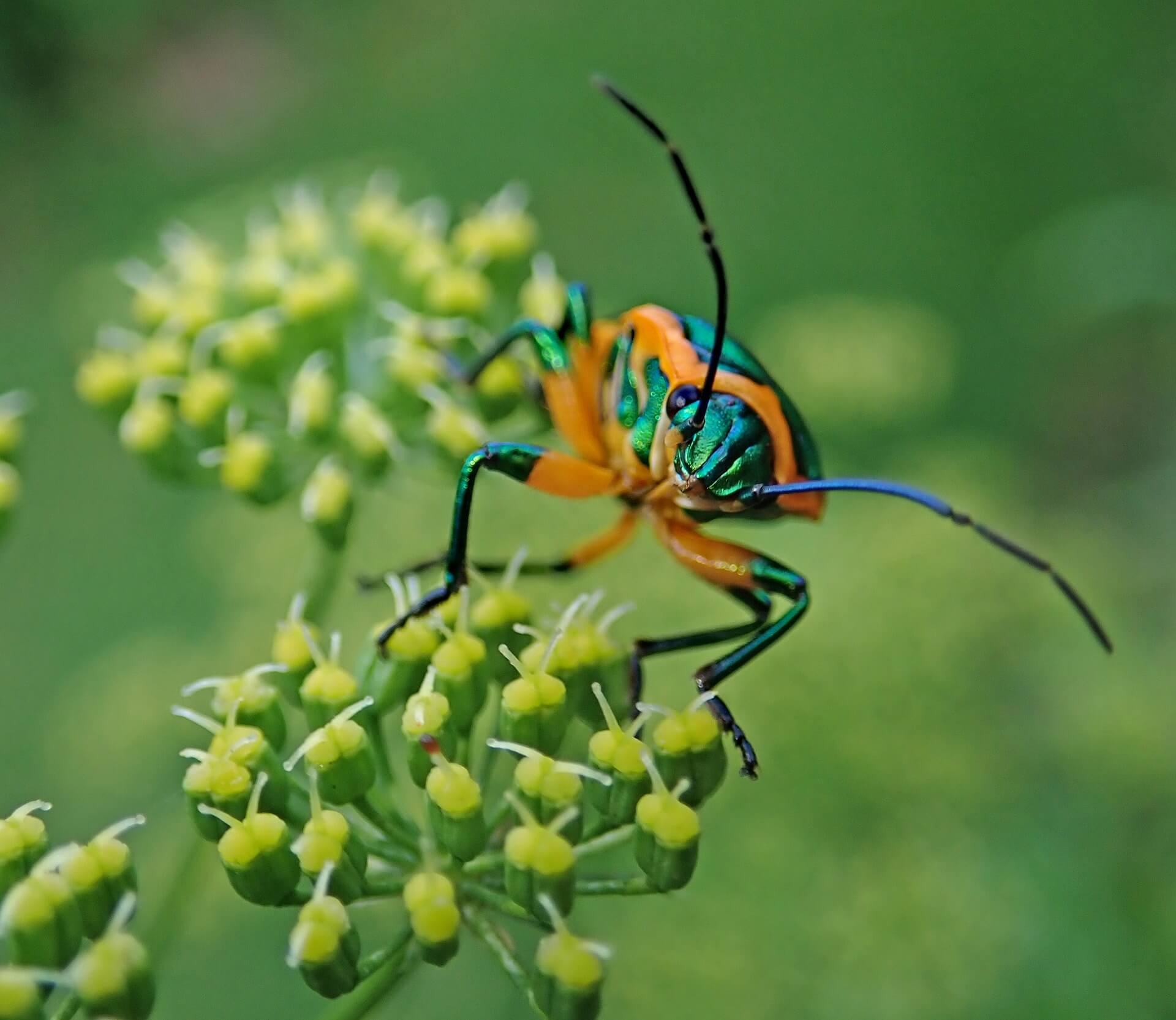
Some pests such as aphids and leafhoppers suck the sap of plants while others cause injury by killing the stem, chewing the leaves, or damaging the flowers.
Insects can also harm the plants by laying eggs into the plant tissue. To add to that, house mice and other rodents can cause damage to the equipment in the grow room.
It can be nerve-racking for budding gardeners to witness their plants in such a state. As a result, farmers don't get the high-quality produce that they were hoping to get and they don't make enough money.
Grow room pest control is a great solution that can help growers improve yield and have high-quality produce especially when using full-spectrum LED grow lights.
How Do Pests Enter A Grow Room?
Pests are tiny creatures and they can easily enter a grow room through tiny cracks, drainage holes, air vents, windows, and even possibly, from your clothes.
Most beginners have no idea about this and they end up wearing the same clothes to their outdoor and indoor growing areas.
Plus, introducing new plants without inspecting them first is a bad idea since growers can end up bringing plants that are infested with pests.

Additionally, pests can lay their eggs in soil which makes it important to keep your fresh potting soil covered and sealed.
Areas such as basements and attics are perfect for house mice and rats. To keep them at bay, make sure that there are no food items in the vicinity. Fill up any small open holes or cracks with steel wool and larger ones with cement. This will ensure that rodents don't find a place to stay.
Types Of Pests In Your Grow Room
Before going further, you need to know the kind of pests that you may encounter while growing plants indoors. These can range from house mice to spider mites.
Some of the pests that you may encounter in your grow room are:
- Aphids
- Snails
- House mice
- Rats
- House flies
- Caterpillars
- Grasshoppers
- Ants
- Leafhoppers
- Scales
- Fungus Gnats
- Slugs
- Spider Mites
- Thrips
- Whiteflies
Sometimes, insects are hard to see because of the color of their bodies. In such cases, growers can use colorful pieces of paper or a magnifying glass to spot pests.
One can even confirm the existence of pests by spotting the white skins, wings, or droppings that they leave behind on the leaves of plants.
In the next part, let's take a look at the different methods to tackle these pests in your grow room.
How To Tackle Pests In Your Grow Room
There are two approaches to dealing with pests, depending on your preference and how severely the plant is affected.
Natural Pest Control:
If you've noticed the pests early on, it's easier to control the situation and save your plants.
If you are an organic gardener and prefer to use non-chemical methods of pest control, you can use several organic methods to save your plants. These include the use of essential oils, companion planting, biological pest control, etc.
Chemical Pest Control:
If you think the pests have started causing some serious damage to your plants, you can use chemical pesticides to get rid of them.
Chemical pesticides typically work very efficiently, are easy to use, and are reasonably priced, making them a suitable choice for beginners.
Selective chemical pesticides kill specific pests while leaving other pests and insects unaffected. On the other hand, a drawback of using non-selective chemical pesticides is that they end up killing harmless organisms.
These are some of the grow room pest control methods that you can use:
1. Neem Oil:
The neem tree is native to India and has several compounds in its seeds and leaves that are beneficial for pest control and management. It is one of the safest hydroponic pest control products.
Neem oil can be anywhere from yellow to brown. Growers can find it in the form of a spray, soil conditioner, concentrate, insecticidal soap, etc.
Neem oil can help you get rid of grasshoppers, leaf miners, aphids, mealybugs, mites, snails, and flies.

Image Source: agripari.com
When used in small quantities, it is not harmful to mammals and is a safe choice for indoor gardeners to use around the house. It doubles as a fungicide and growers can use it around food crops, fruits, vegetables, and herbs.
The only thing to keep in mind is that one should be careful about using neem oil around a plant suffering from drought stress. In such a situation, make sure to water the plant well before the application.
2. Sticky Traps:
As the name suggests, sticky traps are traps that have a sticky surface that catches insects, bugs, and pests.
A downside of using sticky traps is that they only trap the insects that fly and stick to the surface.
Alternatively, you can make your sticky trap by using a piece of colorful cardboard and applying a layer of a sticky base (such as glue, cornstarch slurry, honey, or petroleum jelly). Simply place your trap around your houseplants and wait!
3. Insecticidal Soap:
Insecticidal soap is one of the most commonly used hydroponic pest control products. It is a safe and efficient alternative to harmful chemical-laden pesticides.
These soaps come in the form of a spray and are effective in killing soft-bodied insects such as aphids, mites, and scales. They suffocate and dehydrate the soft-bodied insect by harming their protective layer.
Before application, growers must read the label of the product.
Typically, products come with three kinds of labels: caution, warning, and danger. Products with the 'caution' label are generally less harmful than the others and beginners should stick to those for their indoor grow room pest control.
Certain plants are sensitive to insecticidal soaps so, as a precautionary measure, don't forget to test the product on a leaf and see how it reacts.
4. Biological Pest Control:
Biological pest control refers to the method of using predators, parasites, competitors, or growing room disease organisms to control the pest population.
There are three methods of biological pest control:
- Importation: when the natural enemies of a particular pest are imported and introduced to a new region to suppress the pest population.
- Augmentation: when the natural enemies of a particular pest are released periodically/continually, thereby increasing the number of natural enemies that occur in that area.
- Conservation: when the existing natural enemies of a pest are conserved by providing the ideal habitat.
Bioline pest control is a company that manufactures a massive range of grow room pest control products. The bio line pest control range includes adaline, amphetamine, underline, and several other kinds of biological control agents.
5. Rubbing Alcohol:
Rubbing alcohol is a common household item that is effective against the treatment of pests such as aphids, red spider mites, and mealybugs.
Growers can mix one part of rubbing alcohol with seven parts of water and create a solution that can be sprayed on plants.
The plant shouldn't be watered with rubbing alcohol as this can potentially damage or even kill the plant.
6. Insect Smoke Bombs:
Growers can fumigate their grow rooms by using smoke bombs. These bombs release smoke which kills pests, mites, and insects when they come in contact with it.
Smoke bombs are an exceptional way to sterilize and decontaminate your grow room between two growing sessions. These bombs come in different sizes for different kinds of growing areas.

Image Source: www.ubuy.ec
Make sure to follow the instructions while treating the area. You may need to follow extra precautions in some cases if you're using them in a grow tent or a small-sized grow room.
When the bug bomb is in use, people and pets should vacate the area. The best bug bomb for the grow room does not harm the plants that are in the grow room.
Companion Planting For Grow Room Pest Control
Companion planting is the method of growing different plants together for mutual benefit. It creates the ideal balanced environment for plants while keeping pests away.
Companion planting comes with enormous benefits, one of them being grow room pest control, and it is amazing for indoor growing–especially when you have limited space. You can grow multiple crops together in the same growing area.

Image Source: www.gaiasorganicgardens.com.au
Growing plants together also impact soil fertility and prevent soil erosion.
Additionally, companion planting deters harmful pests and invites organisms that are helpful for the plants. Such a method requires prior planning and management. For example, growers need to be aware of the needs of the plants that are being grown together.
Certain plants grow very well together such as carrots with radish, celery with leeks, and peas with beans.
Next up, we have some tips to help you keep your grow room environment ideal for plants.
Tips To Keep Your Grow Room Environment Ideal For Plants
- Keep the grow room sealed.
The more sealed the grow room is, the more secure the environment will be for your plants. By using high-quality grow tent kits, you can secure your plants.
You can also have an open-loop grow room where the air is constantly being replaced or a closed-loop grow room where the room is 'enriched' with carbon dioxide every once in a while.
Some growers like to have a hybrid sealed grow room that is a combination of the two.
- Before introducing any new plants in your grow room, make sure to check them thoroughly.
Similarly, ensure to check your growing area every week and keep an eye out for pests. If you detect pests on certain plants, keep them isolated and away from the others.
- It is possible to find pests in bags of potting soil.
So, every time you're ready to bring in a new bag, keep preventive measures in place.
- When you've reached the end of a growing cycle and are ready to welcome another batch of plants, make sure that you thoroughly clean and disinfect the growing area and get rid of any dead and decaying plant matter.
- Maintain appropriate growing conditions for your plants.
Sterilize and thoroughly clean gardening equipment such as pruners, shears, gardening forks, and shovels.
- To minimize the risk of inviting pests, wash new pots with regular soap and water and immediately plant your plants in them.
- If you have pets in the house, ensure that they are not allowed to enter the grow room or areas.
They may end up bringing fleas, ticks or other insects with them.
- Always make sure to check the packaging label of pesticides for warnings and precautionary measures.
These labels include important information about the application.
- Grow lights like Medicgrow grow lights 1000 watt are excellent for growing areas that receive little to no sunlight.
While spraying inside your growing area, ensure to keep the lights turned off until the liquid from the spray has dried. Otherwise, the liquid can function as a magnifying lens and focus the light on the droplets, causing the leaf to burn.
- Apart from the aforementioned methods, some growers like to use a 'heat treatment' for grow room pest control which involves heating the grow room to kill bugs.
This treatment hasn't been talked about much but some growers claim that it can help you get rid of bed bugs, fleas, cockroaches, termites, and any other pests with similar heat tolerance.
Of course, this should only be done before you're ready to welcome a new batch of plants in your grow room. This technique only works on specific pests and can trigger eggs of other pests to hatch.
Conclusion
If you're a first-time grower, flying bugs in a grow tent may surprise you. But fret not, with this complete guide to grow room pest control, you'll be able to have beautiful and healthy plants and bid adieu to those pesky pests!
Related Posts
7 Factors Affecting Plant Growth - How to Make Plants Grow Faster?
How to Choose the Right Grow Fan for Your Grow Room/Tent
Learn About the Importance of Air Circulation for Indoor Plants
Featured Products
Blog Posts
Contact Us with Any Idea!
- Choosing a selection results in a full page refresh.
!















